OEM High altitude operation automatic hydraulic telescopic boom lift
- Model
- THTCZB-12
- Lift height
- 12m
- Work height
- 14m
- Load capacity
- 200KG
- Weight
- 2600KG
- Platform size
- 1200*600MM
- Overall size
- /
- Power supply
- DC/AC/Petrol/Diesel
- Brand
- Tuhe
- Customization
- Yes
- Manual
- Yes
Description
OEM High altitude operation automatic hydraulic telescopic boom lift ,can lift up ,extend horizontally, or turn around 360 degrees to stride across certain obstacles for work . so it can realize multipoint work in wide scope.it can be diesel or storage battery according to customer’s requirements.With 4 full-automatic hydraulic outriggers to steady the whole machine at any kind of ground conditions. When the road is uneven, four full-automatic legs or single leg can support the machine.
In modern construction, maintenance and industry, working at heights has become an integral part of daily work. In order to provide safe and efficient solutions for high-altitude operations, Tuhe, a Chinese manufacturer with extensive experience, provides you with OEM services for automatic hydraulic telescopic boom lifts for high-altitude operation automatic hydraulic telescopic boom lift. This article takes an in-depth look at the features, benefits and why you should choose Tuhe as your partner for this critical piece of equipment.
OEM High altitude operation automatic hydraulic telescopic boom lift
High altitude operation boom lift can lift up ,extend horizontally, or turn around 360 degrees to stride across certain obstacles for work . so it can realize multipoint work in wide scope.
OEM Automatic boom lift With 4 full-automatic hydraulic outriggers to steady the whole machine at any kind of ground conditions. When the road is uneven, four full-automatic legs or single leg can support the machine.
Hydraulic boom lift can be diesel or storage battery according to customer’s requirements.
Telescopic boom lift is safe, reliable and durable. This type of cargo-lifts with characteristics of flexible moving, smoothly lifting, big convenient operation and so on.
Features of automatic hydraulic telescopic boom lift
Telescopic arm design
This lift is equipped with a powerful hydraulic telescopic arm that can extend both vertically and horizontally. This allows operators to easily reach elevated working areas, whether on construction sites or maintenance tasks.
In modern construction, maintenance and industry, there is an increasing need to work at heights, and the telescopic boom design of hydraulic telescopic boom lifts was born to solve this challenge. Equipped with a powerful hydraulic telescopic arm that extends both vertically and horizontally, this lift offers operators endless possibilities and unparalleled productivity.
The vertical extension of the hydraulic telescopic boom is one of its most striking features. This technology enables the lift to quickly and smoothly raise the work platform to the desired height. Whether installing glass curtain walls on a construction site, repairing high-rise facades, or performing maintenance tasks on top of utility poles, vertical reach ensures operators can safely reach their target height.
But telescoping arms are designed to do more than just extend vertically. It also offers excellent flexibility in the horizontal direction. The horizontal reach capability of a hydraulic telescopic boom lift allows operators to easily reach their target location, no matter where it is located. This feature is essential for tasks that require working at height, such as hanging large curtain wall glass on construction sites, performing electrical wiring repairs, or performing overhead tree trimming.
Telescopic booms are designed for a variety of applications, covering a variety of industries including construction, maintenance, industry and utilities. In the construction field, it provides efficient solutions for the construction of high-rise buildings. In the maintenance field, it can be used to repair building facades, lighting fixtures or equipment maintenance. In industry and utilities, it is widely used for tasks such as equipment installation and maintenance, power line maintenance, and more.
The telescopic boom of a hydraulic telescopic boom lift is designed to provide the perfect combination of safety and efficiency. Operators can achieve precise position control both vertically and horizontally while enjoying a highly secure work platform. This not only improves work efficiency but also reduces the risks of working at heights.
No matter what industry you’re in, whether your tasks require vertical lift, horizontal reach, or a combination of the two, hydraulic telescopic boom lifts provide you with the performance you need to get the job done safely and efficiently.
Hydraulic system
The hydraulic system ensures the smooth operation of the lift’s telescopic arm, providing precise control so that the work platform can be positioned safely and stably.
The hydraulic system is the core of the hydraulic telescopic boom lift. Its role is far more than providing power. It is also the source of precision that ensures the smooth operation of the telescopic boom of the lift and the safe and stable positioning of the working platform. In the field of aerial work, the importance of hydraulic systems cannot be underestimated.
The hydraulic system realizes the extension and retraction of the telescopic arm by transmitting hydraulic pressure. The reason why this technology is so important is that it ensures that the lift’s movements are exceptionally smooth. Whether the lift is raising, lowering, extending or retracting, the hydraulic system provides the power and control needed to avoid erratic movement. Not only does this make operators feel safer, it also helps reduce shaking and vibration when working at height.
Another important function of hydraulic systems is to provide precise position control. When working at height, operators often need to accurately position the work platform to a specific height or location. The hydraulic system achieves this by adjusting hydraulic pressure, ensuring precise movement of the telescopic arm. This precision control allows operators to complete tasks efficiently, whether on construction sites, maintenance tasks or other high-altitude work environments.
Hydraulic systems play a key role in ensuring lift safety. It can quickly respond to emergency stop commands to ensure that the movement of the lift can be quickly stopped in an emergency. In addition, hydraulic systems are often combined with other safety features such as emergency stop buttons, guardrails, and safety locks to provide complete safety.
Maintaining the hydraulic system is critical to the performance and longevity of your lift. Regular maintenance can ensure the smooth operation of the hydraulic system and reduce the risk of failure. This includes checking the quality of the hydraulic oil, replacing seals, cleaning filters and other operations to ensure that the hydraulic system is always in optimal working condition.
The hydraulic system is a key component of a hydraulic telescopic boom lift, providing a solid foundation for working at height by ensuring smooth operation, precise position control and critical safety. Whether on construction sites, maintenance tasks or other high-altitude working environments, hydraulic systems play an integral role in ensuring operator safety and work efficiency.
Carrying capacity
These lifts are available in several models with different load-bearing capacities to meet the needs of different tasks, whether it is heavy construction or light maintenance work.
The load-carrying capacity of a lift is one of the key factors that determine its performance in different aerial work tasks. In order to cope with the diverse needs, these lifts are available in multiple models with different load-bearing capacities, whether they are responsible for heavy construction tasks or light maintenance work.
In the field of working at heights, the nature of tasks varies widely. Some tasks require lifting heavy equipment, construction materials, or multiple people working at once, while others may only require light maintenance or positioning into a small workspace. Lift manufacturers are fully aware of these diverse needs and therefore offer several models of lifts to meet the requirements of different tasks.
For heavy-duty construction tasks, lift models typically have higher load-carrying capacities. This means they can carry heavy construction materials, large tools and multiple operators to complete the task efficiently. These lifts are usually used in construction sites, construction of high-rise buildings, hanging glass curtain walls, hoisting equipment, etc.
For light maintenance and repair tasks, lower capacity lift models may be more suitable. They can operate in limited spaces and are used for repairs on building facades, equipment maintenance, lighting repairs, etc. These lifts maintain the safety and efficiency of working at height while adapting to the lightweight nature of the task.
A wide range of lift models ensures flexibility in high-altitude operations, enabling it to be adapted to various task requirements. Operators can choose the most appropriate lift model based on the nature of the task, height requirements and load-bearing requirements, thereby improving work efficiency and safety.
The variety of models and excellent load-bearing capacity of these lifts make them important tools in the field of aerial work. Whether undertaking heavy construction tasks or light maintenance work, these lifts are up to the task and ensure operators can complete their tasks safely and efficiently in high-altitude environments.
Security function
To ensure the safety of working at heights, these lifts are equipped with various safety features such as guardrails, safety locks, emergency stop buttons, etc. to protect the safety of operators.
In the field of working at heights, safety is of paramount importance. These lifts not only provide efficient working solutions but also ensure operator safety while working at heights with multiple safety features. Here are some common safety features that provide essential protection when working at heights:
1. Guardrails: Lifts are usually equipped with strong guardrails to ensure that operators have stable support and protection on the working platform to prevent accidental slipping or falling.
2. Safety Lock: These lifts are equipped with a multi-layer safety lock system to ensure safe fixation of the telescopic boom and working platform. These safety locks automatically take effect when the work platform reaches the desired position, preventing unnecessary movement.
3. Emergency stop button: In an emergency, the elevator operator can quickly stop the movement of the elevator by pressing the emergency stop button. This is a critical safety feature that immediately interrupts lift operations to avoid hazards.
4. Interlock system: The interlock system ensures that the elevator operates under safe conditions. It prevents the lift from starting before reaching a safe position, thereby reducing the risk of accidents.
5. Anti-overturning device: Some lifts are equipped with an anti-overturning device, which can quickly stabilize the platform when the lift tilts to prevent dangerous situations.
6. Safety training: Operators usually receive professional training to ensure they understand the operation and safety procedures of the lift. This helps reduce the occurrence of human errors and accidents.
7. Restricted areas: Elevators can set restricted areas to prevent the elevator from entering dangerous areas, such as near power lines or other dangerous objects.
The collection of these safety features ensures the safety of working at heights. Lift manufacturers place safety at the forefront to protect operators from the potential risks involved in working at heights. Operators can work on these devices with confidence, knowing they are in a controlled, safe environment.
Easy to operate
The design of the lift makes it easy to operate, allowing operators to obtain a stable working platform when working at high altitudes, improving work efficiency.
In high-altitude operations, ease of operation is one of the important considerations in lift design. These lifts are carefully designed to ensure that operators can complete tasks easily and efficiently and provide a stable working platform to ensure work safety.
1. Intuitive control panel: The control panel of the elevator is usually designed to be very intuitive to ensure that the operator can get started quickly. The layout of buttons, levers and controls has been carefully designed to make operation simple and straightforward.
2. Smooth movement: Precise control of the hydraulic system ensures smooth and error-free movement of the lift. Operators can precisely control the extension, retraction, lift and rotation of the telescopic arm without worrying about erratic motion.
3. Comfortable working platform: Lift working platforms are usually designed to be very spacious and comfortable to ensure that operators have enough space to work. This comfort increases operator productivity and reduces fatigue.
4. Rapid positioning: The design of the hydraulic telescopic arm allows the working platform to be quickly positioned to the required height or position. This means operators can get to work faster, making tasks more efficient.
5. Safety first: Although the ease of operation of the lift is emphasized, safety is always the primary consideration. Control panels are often equipped with emergency stop buttons to immediately stop movement in dangerous situations. Additionally, operators often receive specialized training to ensure they understand safety procedures.
6. Adaptability: These lifts perform well in different aerial work tasks. Whether it is construction sites, maintenance tasks, tree trimming or other high-altitude working environments, they can adapt to different needs.
Operational ease is at the core of lift design, aiming to improve work efficiency and ensure operators have a stable working platform when working at heights. These lifts provide an efficient, safe and comfortable solution for working at height with simple, intuitive controls and a height-adjustable work platform.
Application areas of automatic hydraulic telescopic boom lifts
Construction industry
These lifts are widely used in the construction sector for installing steel structures, glass curtain walls, windows and other high-height work tasks.
Maintenance and care
Repair and maintenance teams use these lifts to maintain buildings, equipment, lighting systems, HVAC facilities, and more.
Industrial applications
In the industrial sector, these lifts are used for equipment maintenance, production line maintenance and equipment installation.
Electricity and Utilities
Power and utility companies use these devices to repair and install power lines, cables, lighting and communications facilities.
Tree Care
Tree services and landscape professionals use these lifts to prune and trim tall trees.
Why choose Tuhe as your partner?
Rich experience: Tuhe has rich experience in the field of aerial work lift manufacturing and is able to provide high-quality products.
OEM Services: Tuhe provides OEM services and can customize lifts according to customer needs to meet the needs of specific industries.
Quality Assurance: Tuhe is committed to producing high-quality, safe and reliable products, and undergoes strict quality control and testing to ensure that the products meet industry standards.
The automatic hydraulic telescopic boom lift for high-altitude operations is an indispensable tool in modern work, providing a safe and efficient solution for high-altitude operations. Choosing Tuhe as your partner will provide you with high-quality lifts to help you succeed in the field of aerial work.
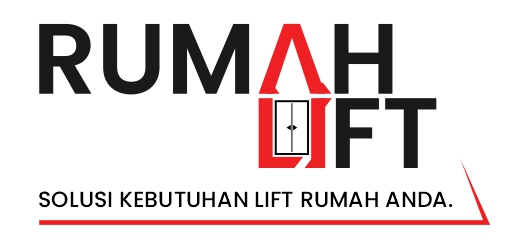
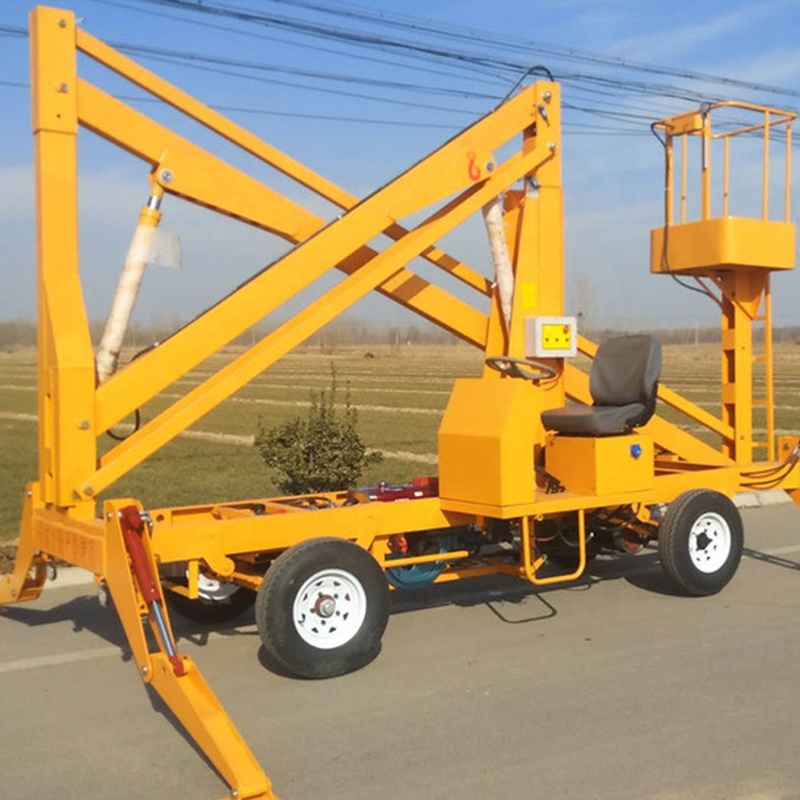
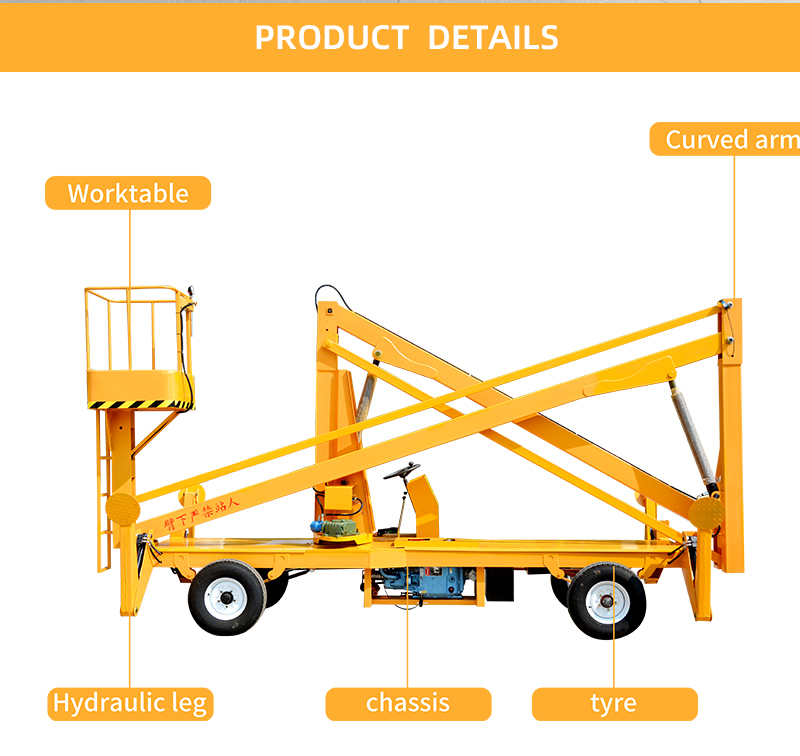
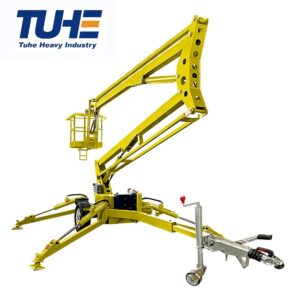
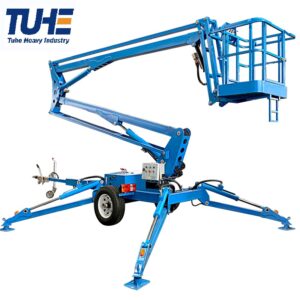
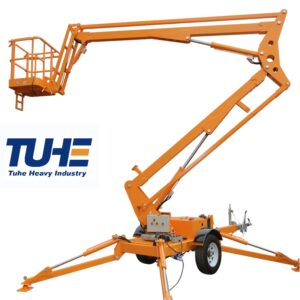
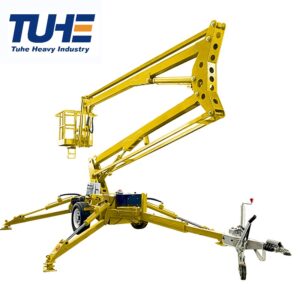
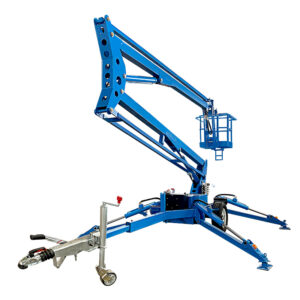
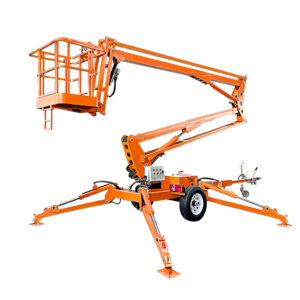
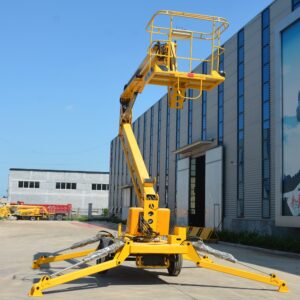
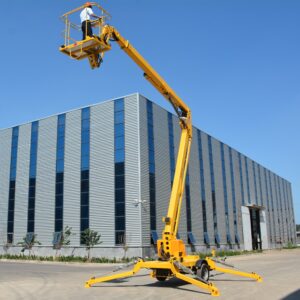
Reviews
There are no reviews yet.